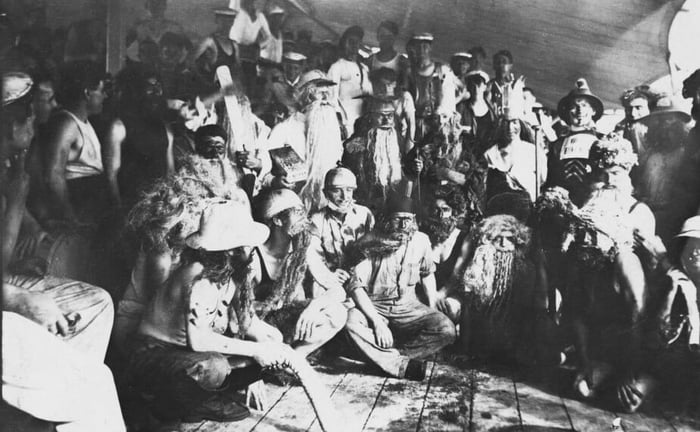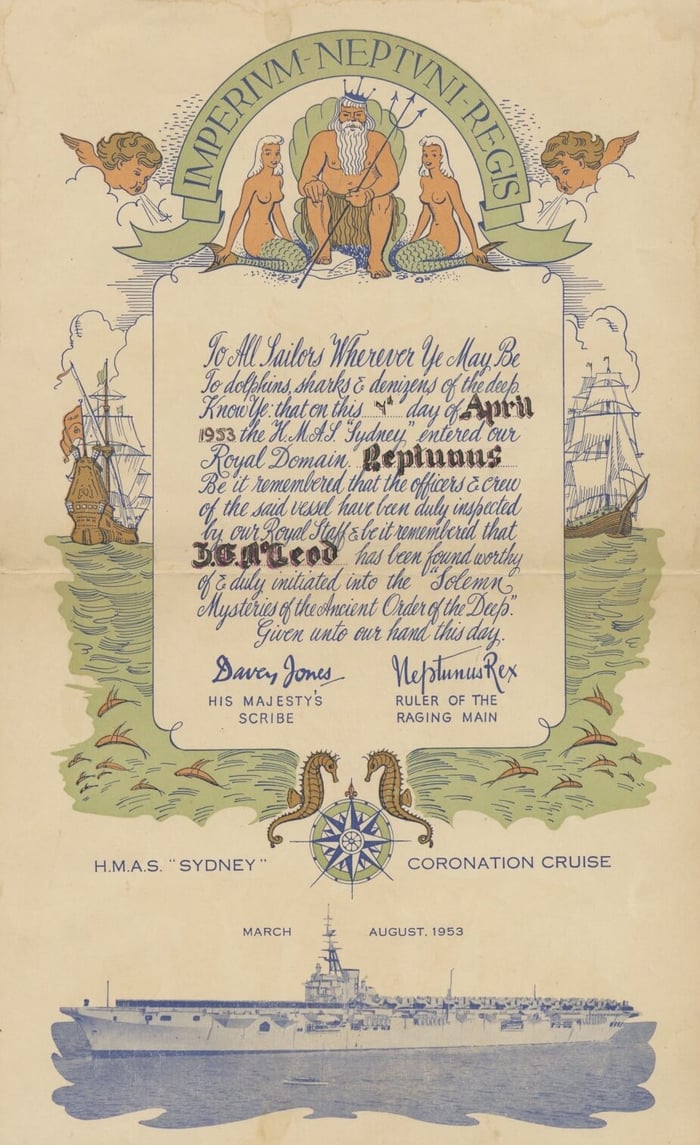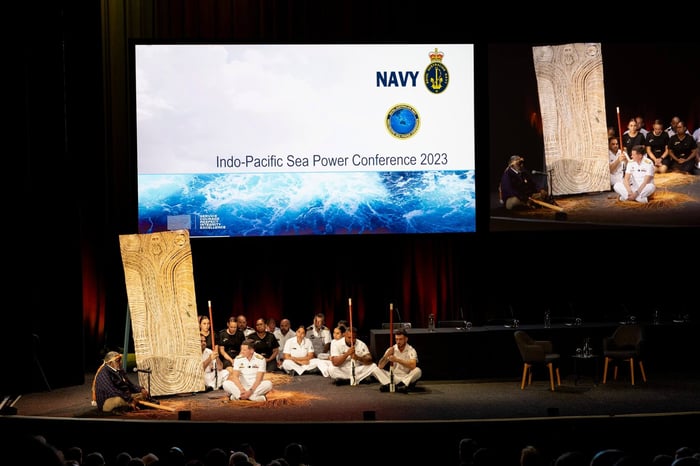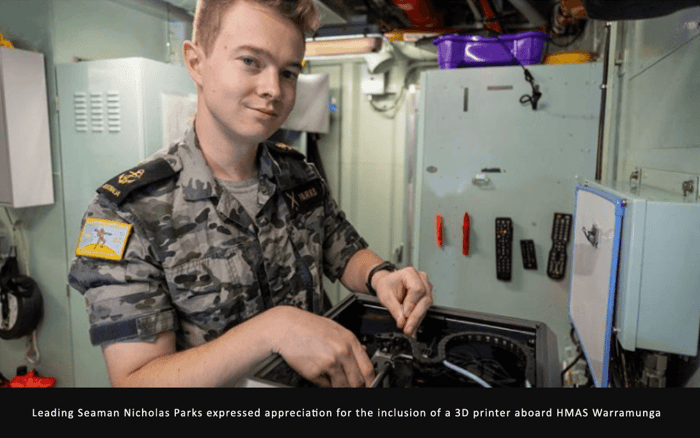Crossing The Line
The tradition of nautical 'Crossing the Line' ceremonies dates back to ancient times. Historical records reveal that the Phoenicians, while navigating the straits of Gibraltar to trade with the Britons, would often partake in religious rituals to appease the God of the Seas during their voyages. Similarly, the Vikings of Northern Europe had their own unique customs.
It is believed that the modern-day ceremony evolved from these ancient superstitions, gradually making its way into the English-speaking world. Over time, the religious elements of the ceremony faded away, transforming it into a significant rite of passage for young sailors joining the global community of mariners.
Crossing The Line With The Royal Australian Navy
This cherished tradition was first embraced by the Royal Australian Navy fleet after its inaugural voyage from England to Australia in 1913. Today, the Crossing the Line ceremony serves a unique purpose - to cultivate a profound sense of unity and camaraderie among the young sailors of a ship's crew. The ceremony, in its modern form, adheres to a prescribed format that guarantees an enjoyable and unforgettable experience for all involved.

The custom of crossing the line was adopted following the formation of the Royal Australian Navy, as seen here onboard HMAS Australia (I) in 1913 (Image from www.navy.gov.au)
During an overseas deployment, the Crossing the Line ceremony takes place as the HMA ship embarks on its first crossing of the equator. In this ancient tradition, sailors pay homage to the majestic mythological god of the seas, Neptune, also known as 'Neptunus Rex' or the Ruler of the Deep. Portrayed by a respected senior member of the ship's company, often a Chief Petty Officer, King Neptune is accompanied by a lively entourage of other senior members who possess a flair for theatrics. Dressed in vibrant and colourful attire, they create a captivating spectacle for all who participate in this unforgettable event.

HMAS Hobart (III) members portray the Royal Court during a crossing the line ceremony in 2018.
The Royal Court usually comprises (from www.navy.org.au):
- First assistant Davy Jones - of Davy Jones’ locker fame;
- Her Royal Highness Amphitrite - formerly Poseidon’s wife but adopted by Neptune after he defeated Poseidon;
- A Royal Baby - whose presence demands an equal measure of respect,
- A Royal Messenger - who delivers summons on behalf of King Neptune;
- A Royal Herald - who proclaims the arrival of King Neptune and his entourage;
- A Royal Barber - who prepares candidates for their appearance before the court;
- The Royal Doctor - who assesses the physical aptitude of candidates;
- The Royal Judge - who hears charges brought against the uninitiated and takes mitigation into consideration while deliberating on behalf of Neptune;
- A Royal Scribe - who reads charges and keeps official records of proceedings;
- Neptune’s Police - who are responsible for overseeing proceedings;
- Royal Bodyguard - King Neptune’s personal and most trusted attendants; and
- Bears - helpers responsible for the baptism of all candidates who volunteer to appear before the court. Gaining acceptance into the Ancient Order of The Deep requires candidates to be doused in the salty sacred waters of His Majesty’s dominions.
From Pollywogs To Shellbacks
Members of a ship’s crew who have yet to cross the equator while onboard a warship are affectionately known as 'Pollywogs' or 'Tadpoles'. On the other hand, crew members who have previously paid their respects to Neptune and have been initiated into his realm are proudly referred to as 'Shellbacks'. These experienced seafarers usually dress up for the occasion, eagerly anticipating the ceremony as it offers a delightful break from the ship's usual routine. Among the esteemed Shellbacks, there are those who hold the esteemed title of 'Golden Shellback', having had the privilege of crossing the equator where it intersects with the international date line in the vast Pacific Ocean. Even more exclusive are the 'Emerald Shellbacks', who have accomplished the remarkable feat of crossing the equator at the Prime Meridian in the Gulf of Guinea, West Africa.
In recognition of this important milestone, all newly appointed Shellbacks are presented with an ornate certificate confirming their new title and status. Numerous variations can be discovered in the naval forces and commercial fleets of the world, and these often transform into cherished mementos. A meticulously orchestrated ceremony will undoubtedly leave an indelible and enduring impact on all individuals as they are warmly embraced into the brotherhood of global mariners.

A certificate presented to a crew member of HMAS Sydney (III) following crossing of the equator during the 1953 Coronation Cruise. The blowing winds, Zephyr and Boreas are recurring themes in these certificates.
Crossing The Line Collection
The latest collection from the Military Shop (also available on the Navy Shop), Crossing The Line caps, figurines and medallions honour this tradition.












